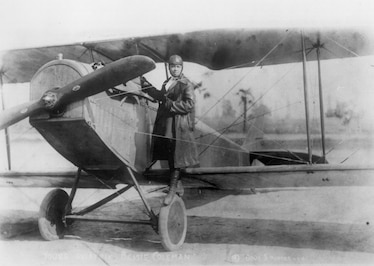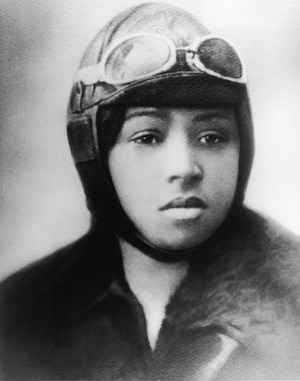
- AFRICAN AMERICAN HEROES
Bessie Coleman
How this pilot inspired people to fly to greater heights
The skies had never seen a pilot like Bessie Coleman before. She was the first African-American woman to obtain an international pilot’s license, soaring to new heights that Black people in the United States had never reached before. But as a Black woman in the 1920s, she faced many obstacles because of her race and gender. She would say that “the air is the only place free from prejudice.”

Coleman was born in Atlanta, Texas, on January 26, 1892, the 10th of 13 children. Her mother was African American, and her father’s ancestors were Black and Choctaw, a Native American people; they were both sharecroppers who picked cotton for a landowner.
When she was young, her family moved to Waxahachie, Texas, where she attended segregated schools (meaning Black children went to separate schools, which usually weren’t as good as schools for white children). She enrolled in Oklahoma Colored Agricultural and Normal University in 1910 but had to drop out because she didn’t have the money to pay for school.
She eventually moved to Chicago, Illinois, in 1915 and worked in a barber shop painting fingernails. When her brother John returned from fighting in France during World War I, he told stories of the freedom that women overseas enjoyed. They could be pilots, he said. That sparked Bessie’s new dream: to be an aviatrix.
She saved up money and applied to U.S. flight schools. But every school rejected her because she was Black and a woman. Finally, Robert Abbott, the publisher of an African-American newspaper called the Chicago Defender, suggested she try schools in France. She learned French, left the United States, and enrolled in the Cauldron Brothers’ School of Aviation in Le Crotoy, France. She earned her international pilot’s license on June 15, 1921, within a year of enrolling. Afterward she studied stunt flying across Europe.

When she returned to the United States in 1922 as an aerial acrobat, Coleman amazed Black and white audiences with her daredevil feats. Known as “Queen Bess” and “Brave Bessie,” she would do loops, barrel rolls, and figure eights in her plane—she’d even walk on the wings and parachute out. She also used her fame to fight racism and segregation, refusing to fly in shows that forced Black and white spectators to enter through separate gates.
In 1923, Coleman survived a bad accident that left her with a broken leg and ribs. But soon she recovered and started doing stunts at air shows again. Her goal was to open a school for Black pilots, but she never completed that dream. On April 30, 1926, she died in another plane accident caused by a loose wrench lodging into the engine’s controls. But her courageous feats of flight have inspired a fleet of Black women pilots who came after her and journeyed to the sky.
Source: National Geographics Kids

